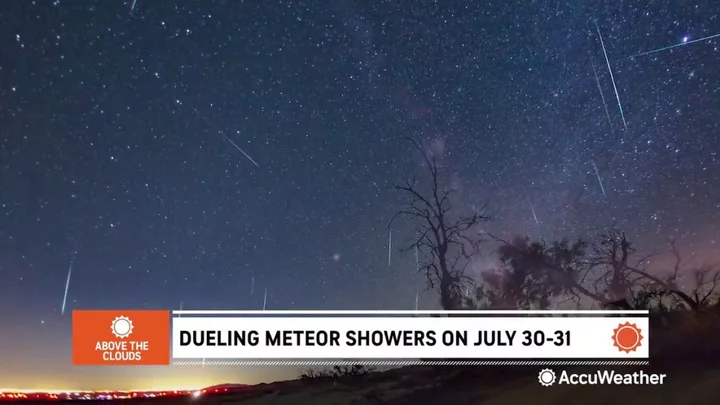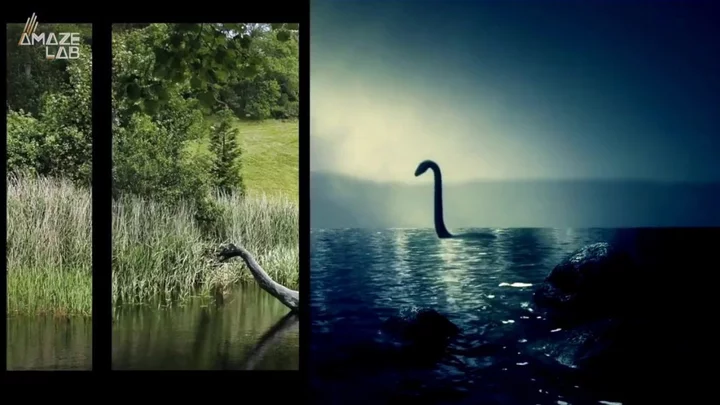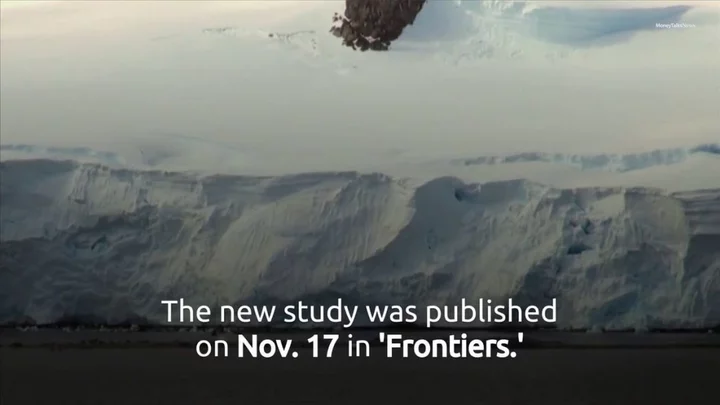
Elon Musk raises eyebrows with 'huge' change he's planning for future of X
As if changing Twitter's name to X wasn't enough, Elon Musk is now raising eyebrows with his plans to make the app dark mode-only. "It is better in every way,” the Tesla and SpaceX chief tweeted, confirming it would be bidding farewell to the iconic blue and white theme. Linda Yaccarino, who recently became CEO, has expressed that the app will move away from its short-form nature, and become a 'global marketplace for ideas, goods, services, and opportunities'. However, users are already in mourning before the transition has begun. Sign up to our new free Indy100 weekly newsletter
2023-07-28 23:18

Experts resurrect parasite after 46,000 years in Siberian permafrost
Scientists have resurrected a parasite which has been dormant in the frozen permafrost of Siberia for 46,000 years. The microscopic creatures were first uncovered as part of a remarkable discovery back in 2018. At the time, researchers led by Anastasia Shatilovich found two of the worms in sub-zero temperatures in the soil. At first, it was previously thought that the creatures could stay in their slumber for just 40 years. However, it was later revealed that they could stay inactive for tens of thousands of years. Sign up to our free Indy100 weekly newsletter The creatures tend to shut down their systems when they are in unfavourable conditions. This means they won’t move or reproduce, and their metabolism stops. Carbon analysis has revealed that the worms – also known as nematodes – came from a prehistoric era. The developments could change the way experts approach bringing back other extinct species, too. During an analysis, the research team discovered the worms were Panagrolaimus kolymaensis - a species that was previously thought to be extinct. The scientists wrote in their paper: “Previously, we had shown that nematodes from the Siberian permafrost with morphologies consistent with the genera Panagrolaimus and Plectus could be reanimated thousands of years after they had been frozen. “Several viable nematode individuals were found in two of the more than 300 studied samples of permafrost deposits spanning different ages and genesis.” It’s not the only thing that scientists have recovered from permafrost, either. It was announced earlier this year that scientists are busy working on reviving 'zombie viruses’ that have been lying dormant for tens of thousands of years in Arctic conditions, and while it sounds absolutely terrifying, it could be important when it comes to protecting us all in the future. Have your say in our news democracy. Click the upvote icon at the top of the page to help raise this article through the indy100 rankings.
2023-07-28 19:21

Algeria media guide
An overview of the media in Algeria, as well as links to broadcasters and newspapers.
2023-07-28 19:17

Former Elon Musk colleague reveals Twitter boss ‘seems quite lonely’
It’s lonely at the top – just ask Elon Musk’s former colleagues. The Twitter owner tells the same jokes and anecdotes “over and over” and “seems quite alone,” according to a former senior executive at the company. Esther Crawford, who went viral last year after being pictured sleeping on the floor of Twitter’s office while trying to meet a tough deadline set by Musk, shared her thoughts in a post on the platform which was recently renamed X. Sign up to our free Indy100 weekly newsletter Crawford joined Twitter when it bought her startup in 2020, well before the billionaire took over the social media platform in a $44bn deal last year. The former head of product development, who was sacked in February as part of a round of 200 layoffs, said: “Elon is oddly charming and he's genuinely funny. He also has personality quirks like telling the same stories and jokes over and over. “The challenge is his personality and demeanour can turn on a dime going from excited to angry. “Since it was hard to read what mood he might be in and what his reaction would be to any given thing, people quickly became afraid of being called into meetings or having to share negative news with him.” She said Twitter employees feared being called into meetings with him or having to deliver bad news. “At times it felt like the inner circle was too zealous and fanatical in their unwavering support of everything he said.” “Product and business decisions were nearly always the result of him following his gut instinct, and he didn't seem compelled to seek out or rely on a lot of data or expertise to inform it. “I saw a person who seemed quite alone because his time and energy was so purely devoted to work.” Meanwhile, Musk appeared to put more faith in random feedback and Twitter polls than in his employees who were working to troubleshoot problems. She said: “His boldness, passion and storytelling is inspiring, but his lack of process and empathy is painful.” However, she didn’t pull any punches about the previous management either, calling it “bloated” and “soft and entitled” where “teams could spend months building a feature and then some last-minute kerfuffle meant it'd get killed for being too risky.” Musk recently killed off the iconic bluebird Twitter logo, replacing it with a white X. He has said he wants to create a super-app inspired by China’s WeChat which would offer messaging and payments as well as social media. That vision may be difficult to make a reality, after the collapse of the platform’s advertising business as marketers soured on Musk’s decision to fire thousands of employees and dial down its content moderation efforts. Have your say in our news democracy. Click the upvote icon at the top of the page to help raise this article through the indy100 rankings.
2023-07-28 17:21

Scientists say people have the ability to 'smell' rain before it arrives
Ever wondered why people say they can smell rain before it rains? They are not pulling your leg - there is real science behind it. It is all because of petrichor, made up from the Greek words "petra", meaning stone, and '"ichor", which refers to the golden fluid that flows in the veins of the gods in their mythology. It basically means the the "smell of rain" with the phrase coined by Australian scientists Joy Bear and Richard Thomas in 1964. Jeff Weber, a meteorologist with the University Corporation for Atmospheric Research Unidata Program Center told the Mirror: "Petrichor is caused by oils derived from plants, primarily leaves, that accumulate over dry periods. These oils settle into soils or onto pavement over time and are released into the atmosphere by being disturbed by rainfall." According to the Met Office, the reason people claim to smell rain because it comes is because "when a higher humidity is experienced as a precursor to rain, the pores of rocks and soil become trapped with moisture forcing some of the oils to be released into the air". Sign up to our free Indy100 weekly newsletter Despite some being released before it actually rains, the strongest smell is released during. This is when raindrops landing on soil "trap tiny air bubbles on the surface which then shoot upward" and "burst out of the drop throwing aerosols of scent into the air where they are then distributed by the wind". The smell is produced by a soil bacteria which releases a chemical called geosmin, which provides an "earthy", musky or fresh aroma. Before it rains, a person might be able to smell the scent of ozone, or O3, which is a naturally present gas in the atmosphere which gets its name from the Greek word 'ozein', or smell. It sometimes indicate that a storm is on the way because pockets of gas are pushed down to ground level by winds. This means that those who are sensitive to the smells will likely be able to pick them up. So now you know. Have your say in our news democracy. Click the upvote icon at the top of the page to help raise this article through the indy100 rankings.
2023-07-27 23:17

Harrowing animation shows how Oppenheimer's atomic bomb worked
The release of Christopher Nolan’s Oppenheimer has generated a flurry of interest in the man behind the atomic bomb, Julius Robert Oppenheimer. The film tells the story of the physicist and his role in the Manhattan Project, which was the the codename given to the development of the A-bomb. Oppenheimer, who referred to himself as “death, destroyer of worlds”, was the figurehead of the project, which involved splitting the atom and the devastation wrought by two atomic bombs being dropped on Japan in 1945. Sign up to our free Indy100 weekly newsletter The first bomb was dropped on the city of Hiroshima on 6 August 1945. It killed tens of thousands of people. It was nicknamed Little Boy. Oppenheimer Atomic bomb How it Works | First Nuclear Bomb www.youtube.com A second bomb fell days later on the city of Nagasaki, this time nicknamed Fat Man. Historians believe more than 200,000 people died as a result of the events, with millions more severely affected. Now, YouTube channel AiTelly has produced a video of what exactly happens inside such a weapon to create such a wave of destruction. The animation shows that when the bomb falls, it activates a switch that triggers a trio of navy gun primers, which in turn ignite a charge inside the weapon. Four silk powder bags containing two pounds of cordite, an explosive powder, push the the uranium projectile forward at 300 metres-per-second. The uranium collides with more uranium at the front of the bomb, combining them with four polonium initiators, which create nuclear fission. This is the act of splitting the atom, and it is what creates the huge expulsion of energy – the explosion. Have your say in our news democracy. Click the upvote icon at the top of the page to help raise this article through the indy100 rankings.
2023-07-27 21:56

A meteor which exploded over the Atlantic had similar force as Hiroshima atomic bomb
A meteor exploded over the Atlantic Ocean at a force comparable to the atomic bomb dropped on Hiroshima during the Second World War. While this may sound like a scary prospect, there is nothing to worry about as this asteroid did not actually hit the Earth. The debris burned up at a height of around 31 kilometres above the Atlantic Ocean off the coast of Brazil, experts say. Data from NASA showed that the meteor appeared to release the equivalent energy of around 12,000 tonnes of TNT - that's approximately 12 kilotons of explosive power. Sign up to our free Indy100 weekly newsletter Similarly, the Hiroshima Bomb detonated with an approximate energy of 15 kilotons – that is, 15 thousand tonnes of TNT equivalent. This force caused devastation in the Japanese city and killed at least 80,000 people instantly, with tens of thousands dying later due to radiation exposure. Although 12 kilotonnes does sound like a lot, there have also been other explosions that have had a higher number than this. One example is the 450 kilotons of explosive energy (0.45 megatons) released as a result of the Chelyabinsk meteor back in 2013 - 26 to 33 times as much energy as the Hiroshima Bomb. The house-sized asteroid exploded 14 miles above the ground and generated a shock wave that blew out windows over 200 square miles and damaged some buildings. Over 1,600 people were injured in the blast, mostly due to broken glass, according to NASA. Elsewhere, amazing footage captures the moment a meteor crashes into the moon and, scientists discover a secret planet hiding in our solar system. Have your say in our news democracy. Click the upvote icon at the top of the page to help raise this article through the indy100 rankings.
2023-07-27 21:16

Researchers throw a new twist into the age-old Loch Ness Monster tale
The Loch Ness Monster has left people scratching their heads for years, with many claiming they spotted the beast itself. Now, it's got its own "eel hypothesis," a paper dedicated to the theory that such sightings could have been eels. Researchers looked at data from Loch Ness to understand the number of eels there and their average measurements, as per IFL Science. They discovered that the eels were on the smaller side, compared to the estimates of the Loch Ness Monster, said to be roughly 1-2 metres according to one sighting. Another suggested it could be 15-20 metres. "However, this is not quite the ‘monster postulated," the authors told the outlet."Indeed, the probability of finding a 6-meter [20-foot] eel in Loch Ness is essentially zero – too low for the software used to provide a reliable estimate." "Thus, while large eels may account for some eyewitness sightings of large, animate objects rising to the loch surface, they are unlikely to account for 'sightings' of extraordinarily large animals, which may instead be accounted for by wave phenomena, the occasional stray mammal, or other reasons." Sign up for our free Indy100 weekly newsletter It comes after several sightings last year were shot down by an academic who said they were simply whale penises. Michael Sweet, a professor in molecular ecology at the University of Derby, candidly, and informatively, added: "Whales often mate in groups so while one male is busy with the female the other male just pops his d*** out of the water while swimming around waiting his turn. "Everyone’s gotta have a bit of fun, right?" Have your say in our news democracy. Click the upvote icon at the top of the page to help raise this article through the indy100 rankings.
2023-07-27 00:45

Earth-like planet that humans could live on found just 31 lightyears away
A planet with conditions on the surface resembling Earth has been discovered a relatively short distance from us. In fact, it’s just 31 light-years away, which is the space equivalent of 'down the road'. Scientists are always excited when it comes to the discovery of new exoplanets, and this is no different. The planet, named Wolf 1069 b, is the sixth closest exoplanet to Earth has been found and the findings were published in the journal Astronomy & Astrophysics. Sign up to our free Indy100 weekly newsletter It orbits the red dwarf - which is named Wolf 1069. As such, the planet has been given the name Wolf 1069 b. The planet was discovered during a study called CARMENES which is a long-term study based around finding exoplanets. Encouragingly, scientists believe that the planet sits in the habitable zone around its sun where water can exist in liquid form. The study was undertaken by a team led by astronomer Diana Kossakowski of the Max Planck Institute for Astronomy. Kossakowski said: "When we analyzed the data of the star Wolf 1069, we discovered a clear, low-amplitude signal of what appears to be a planet of roughly Earth mass. "It orbits the star within 15.6 days at a distance equivalent to one-fifteenth of the separation between the Earth and the sun." It comes after a new planet was discovered with a surprisingly fluffy composition - like candy floss. The exoplanet, WASP-193b, was discovered 1,232 light-years away and while it's nearly 50 percent bigger than Jupiter, it's light and fluffy making it as dense as the sweet treat. According to a team led by astronomer Khalid Barkaoui of the University of Liège in Belgium, the planet orbits a Sun-like star named WASP-193. This star is around 1.1 times the mass and 1.2 times the radius of the Sun and is very close to the Sun in temperature and age. The planet orbits the star around once every 6.25 days. Have your say in our news democracy. Click the upvote icon at the top of the page to help raise this article through the indy100 rankings.
2023-07-26 23:15

Study reveals the best exercises to lower blood pressure
A study has found the best exercises to lower blood pressure, so get ready to go to the gym. Research published in the British Journal of Sports Medicine and conducted at Canterbury Christ Church and Leicester universities, compared the efficacy of different forms of exercise on reducing blood pressure and found that “isometric exercises” – which involve engaging muscles without moveme are your best bet. That means it is time to hold a wall-sit, or plank for ages. Fun times. The study examined 270 randomised controlled clinical trials, involving 15,827 participants, on the effects of different types of exercise on resting blood pressure. It even found that these isometric techniques were almost twice as effective as government recommended exercises, aerobic activity like cycling and walking, though they found these other forms of exercise were effective too. Reducing blood pressure reduces your chance of stroke, heart failure, and other issues. Sign up to our free Indy100 weekly newsletter Over-40s are advised to have it checked every five years. Treatment often involves medication but patients are also advised to eat healthily, reduce alcohol intake, stop smoking and exercise regularly. Jamie O’Driscoll, a reader in cardiovascular physiology at Canterbury Christ Church university and senior author of the report, said in isometric exercises the muscle remained contracted but did not change in length. This static contraction could squeeze the vessels that supplied blood to the working muscles – which reduced the flow of blood to the muscle during the exercise and therefore oxygen supply to the muscle. When the muscle relaxed afterwards, it caused a large flow of blood through the vessels (this was different to other modes of exercise) and was likely to be the trigger driving these greater improvements in blood flow regulation. “Performing 4 x 2 minutes of wall sits, with 2-minutes’ rest in between, three times per week, is an effective way to reduce your blood pressure,” said O’Driscoll. “They should be done alongside other exercise modes, to provide the maximum range of exercise choices rather than limiting them.” Dr Kush Joshi, a sports and exercise medicine consultant and fellow of the Faculty of Sport and Exercise Medicine, welcomed the study’s findings, but questioned how easy it would be for patients to do. “The reality is a significant proportion of the population will not be able to do a plank or wall sits, and furthermore may not enjoy these types of activities,” he said. “Solutions need to be found to make these exercises accessible to all individuals with elevated blood pressure, and the study should provide impetus to policymakers to make exercise the bedrock of treatment of not only high blood pressure but other medical conditions and so to reduce the burden of medication for the population.” Joanne Whitmore, a senior cardiac nurse at the British Heart Foundation, said it was encouraging to see the benefits of other forms of exercise, as well as aerobic exercise. “We know that those who take on exercise they enjoy tend to carry on for longer, which is key in maintaining lower blood pressure.” But she said it was important to make lifestyle changes too, such as losing weight, eating more healthily and reducing alcohol consumption. Have your say in our news democracy. Click the upvote icon at the top of the page to help raise this article through the indy100 rankings.
2023-07-26 18:53

Mysterious 'pyramid' discovered in Antarctica
Conspiracy theorists have been turning their attention to Antarctica more than you’d expect over recent years. First, there was the case of the “bleeding waterfalls”, which remains one of the strangest natural phenomena you're likely to see, and there’s also the mystery of a so-called “pyramid” which has been found on the continent. Only, it’s not a pyramid at all – in fact, it’s a mountain. The Ellsworth Mountains are the highest mountain range in Antarctica and stretch 400km and the mountain in question was discovered by the British Antarctic Expedition of 1910-1913 Sign up to our free Indy100 weekly newsletter It was called “The Pyramid” to keep the true nature of the discovery hidden from others at the time. Over the last hundred years, however, people have been speculating about the true nature of the location (even though it’s very much a mountain, poking up out of the ice) and now a second interesting geographical feature has bee discovered and got them talking all over again. The location in question is found at the coordinates 79°58’39.25?S 81°57’32.21?W, which has been a much-searched spot on Google Earth. Speaking to IFL Science, geologist at the German Research Centre for Geosciences in Potsdam, Dr Mitch Darcy, said: “The pyramid-shaped structures are located in the Ellsworth Mountains, which is a range more than 400 km long, so it’s no surprise there are rocky peaks cropping out above the ice. The peaks are clearly composed of rock, and it’s a coincidence that this particular peak has that shape. “It’s not a complicated shape, so it’s not a special coincidence either. By definition, it is a nunatak, which is simply a peak of rock sticking out above a glacier or an ice sheet. This one has the shape of a pyramid, but that doesn’t make it a human construction.” So, the new location is just that – a mountain poking out the top of the ice in Antarctica, and not a mysterious pyramid at all. Antarctica has been the subject of more than its fair share of speculation recently, after conspiracy theorist Eric Hecker described the Amundsen–Scott South Pole Station by the south pole as an “air traffic control” hub for aliens earlier this year. Hecker claimed that in 2010 Raytheon, the US aerospace and defence conglomerate chose him to be a contractor on the research centre operated by the United States National Science Foundation. There was “much more” to the station that first met the eye, according to Hecker. Have your say in our news democracy. Click the upvote icon at the top of the page to help raise this article through the indy100 rankings.
2023-07-26 00:16

Scientists are claiming an alien spaceship crashed straight into Mars
Is there life on Mars? Well, according to new research, an alien crash landing there could explain puzzling new findings on the surface of the Red Planet. It comes after Nasa’s Curiosity Rover captured images of spiked protrusions on the surface back in April. The strange formations captured in the pictures seem to show a row of spikes and sharp angles emerging from rocks at the base of the Gale Crater, which is 154km long. The odd discovery has put scientists on high alert and it marks one of the most peculiar things ever recorded on the surface of Mars. Sign up to our free Indy100 weekly newsletter Astrobiologist Dr Nathalie Cabrol, who is from the NASA Ames Research Centre and Search for Extraterrestrial Intelligence (SETI) Institute, even said that it’s the “most bizarre” rock she’s seen in 20 years of studying the planet. The findings are so irregular, in fact, that experts cannot rule out the idea that they’re extraterrestrial in origin. “A fragment from an extraterrestrial or terrestrial spacecraft cannot be discounted with absolute certainty” the authors of new research published in the Journal of Astrobiology stated. The odd protrusions could be “sand spikes”, which form in certain sands as a result of strong earthquakes. Another theory posits that the formation could be debris from crashed spacecraft, and authors of the study have not ruled out that it could be the result of crafts launched by humans landing on the surface. "Given that possibly 10 or more craft have crashed upon the surface, coupled with the jettison of equipment associated with landing the rovers, it is possible the spikes and its substrate are human-made and consist of debris that fell onto the surface of Gale Crater," the paper reads. “Nevertheless, no debris field is evident and no evidence of any additional debris that may have originated on Earth. “Given its small size and that there are no known human-made analogs and no logical explanation as to what purpose these spikes may serve, it does not seem likely these specimens are the remnants of craft or equipment that fell into Gale Crater. One can only speculate about extraterrestrial origin." However, speaking to The Telegraph, Prof Richard Armstrong, of Aston University, Birmingham said: “There is no way of proving for certain what the spikes are but the balance of the evidence would suggest ‘sand spikes’ resulting from seismic activity on Mars.” Have your say in our news democracy. Click the upvote icon at the top of the page to help raise this article through the indy100 rankings.
2023-07-25 20:54
